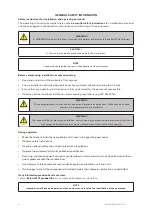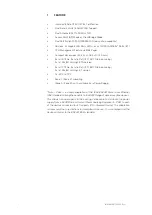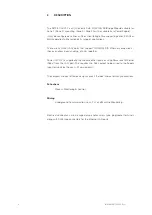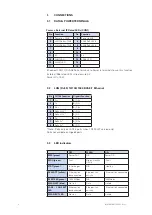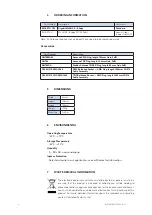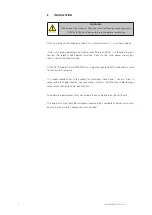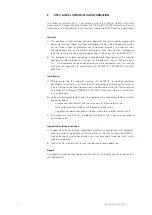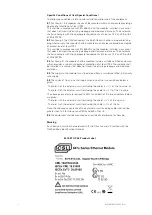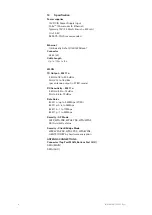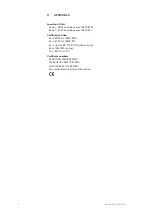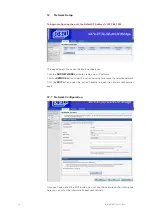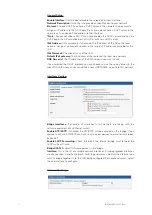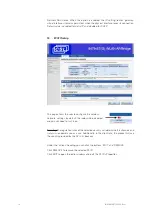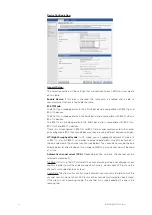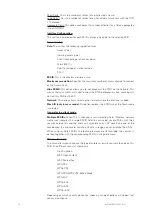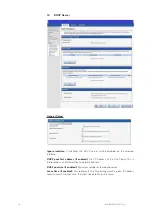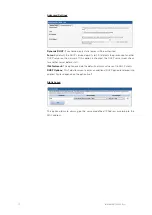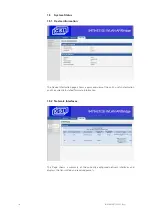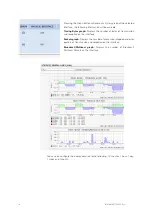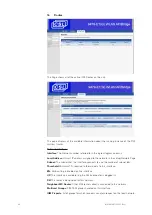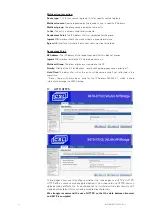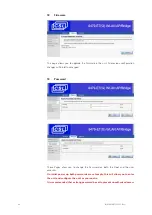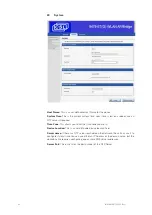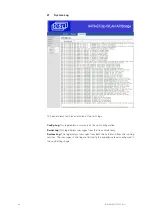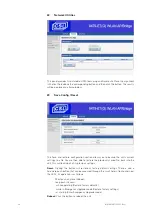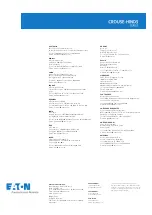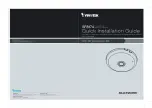
14
INM 9479-ET(G)-CSL Rev 1
Other Roles: The other roles, (mesh portal, ad-hoc) support only one channel, this
parameter is not available and you must select a channel in the dropdown box.
Channel:
According the selected 802.11 mode and the regulation rules of the selected
country, a list of channels is available for selection. This is not used for infrastructure
client modes, as they use all the allowed channels for scanning.
In some cases, a single radio card can handle multiple Wi-Fi roles simultaneously. In
this case and ‘client’ function must be set to only scan the common channel.
You can select several channels so that the AP will select the cleanest one and will be
able to switch to another if a radar is detected on the current one. To select multiple
channels, use Ctrl + click.
Advanced Settings
Max Transmit Power:
The transmit power is normally set automatically based on the
regulation rules for the given channel and the capabilities of the radio card. This option
sets an upper bound on the transmit power. The transmit power is distributed between
the configured antennas.
Antennas:
NOTE: Improved RX signal strength and full TX power is achieved only
buy using two antennas
and selecting "All" for this option. Both are also required for
802.11n MIMO mode. For single antenna use select "Only #1" and connect the antenna
to the AUX socket, however performance will be reduced with a single antenna.
Qos Profile:
This option allows choosing between the two Qos profiles.
Distance optimization:
Use this option if your link covers a long distance, it will
update the internal timeouts.
Beacon interval:
This option allows configuring the interval between two beacon
frames.
Fragmentation threshold:
This option configures the maximum 802.11 frame size in
802.11a/b/g mode in bytes. Frames that exceed this threshold are fragmented.
RTS/CTS threshold:
The Wi-Fi standard uses the RTS/CTS protocol to avoid collision
in the air; this option defines the size of the frames subject to this protection. Use RTS/
CTS when you have interference on your channel or a poor performance on the Wi-Fi.
Retry settings:
Unicast data frames are normally acknowledged. If the transmitter
does not receive the acknowledgment, it must resend the frame. In 802.11n mode,
several frames can be aggregated into one big frame called an A-MPDU. Independent
frames are acknowledged by an individual ACK frame, while A-MPDU frames are
acknowledged by a single ‘Block acknowledge’ frame containing one acknowledgment
for each subframe in the A-MPDU. When you check this option, you can set the
number of retries.

